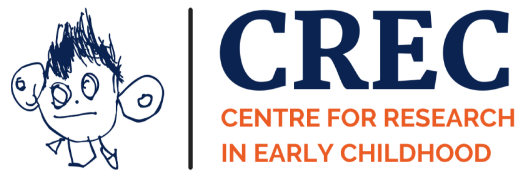Why getting children active is good for parents too
by Dr Jane Dorrian
Reducing obesity, improving wellbeing, increasing engagement in learning - the benefits of getting children involved in physical activity are wide ranging and well documented. But a recent project in Wales suggests that there are also positive outcomes for the parents who get involved.
Welsh Active Early Years is a 5-week movement and play based bilingual activity programme delivered to parents and their children across Wales which was launched in 2020 with the aim of setting families off onto a lifelong physical literacy journey (Whitehead, 2013). As part of the project’s evaluation parents were asked to complete questionnaires measuring their levels of physical activity and wellbeing at the start and end of the programme. Analysis of these measures showed that 75% of parents who completed the programme had increased their physical levels by an average of an hour a day, and 71% showed an improvement in their wellbeing scores which was still apparent 12 months later.
Feedback from parents also showed that they had become more aware of physical literacy, recognising that everyday physical activity had the same beneficial outcomes as organised activities such as sports and that they didn’t need to have specific equipment or go to particular locations to get active. This was important because the perception that getting physically active meant participating in organised sport had been identified as a barrier to participation, particularly for families in deprived communities in Wales (Khanom et al, 2019).
The COVID-19 lockdowns came into force just as the project was launched and, like so much other provision, facilitators had to rapidly adapt their role and the programme content to online delivery. There was apprehension about how successful this change could be- sitting in front of a computer is usually seen as the antithesis of physical activity- but unexpectedly the outcomes were positive. Some families highlighted that not having to get everyone ready to go out and load up the car or rush for the bus made attendance much easier, and facilitators noted that some hard-to-reach families felt more comfortable accessing the sessions remotely as there was less pressure to interact with other people and they could leave easily at any point just by logging off.
The switch to remote delivery did have a negative impact on the collection of data needed for the project evaluation. In a face-to-face session it would have been straightforward to give out the questionnaires during the final session and collect them straight back in, but getting participants to complete and return these online was more difficult and this resulted in a low completion rate.
Although the headline findings of the project evaluation were positive factors were identified that showed some of the limitations of the programme. More than 90% of the parents involved were white females and 75% lived in urban town or city locations so there is clearly work to be done in increasing the involvement of men, parents from other ethnic groups and families in rural locations. The findings also showed that families wanted to carry on their involvement with physical activity sessions when they had completed the programme but there were no clear next steps set out to allow them to move on which created the risk of them not continuing on their physical literacy journey.
My BECERA presentation will explore the implications of the project evaluation’s findings as well as outlining the legacy work and projects that have grown out of the initial programme.
References:
Khanom, A., Evans, B., Lynch, R., Marchant, E., Hill, R. A ., Morgan, K., Rapport, F., Lyons, R. A . & Brophy, S. (2020) ‘Parent recommendations to support physical activity for families with young children: Results of interviews in deprived and affluent communities in South Wales (United Kingdom)’, Health expectations : an international journal of public participation in health care and health policy, 23(2), pp. 284–295.
Whitehead, M. (2013) Definition of physical literacy and clarification of related issues. International Council of Sport Sciences and Physical Education Bulletin, No:65, pp.28-34
Dr Jane Dorrian is a Lecturer in Early Childhood at The Open University. Her research interests include the professional identities of early years practitioners and physical literacy in the early years.
X: @DrJaneDorrian | LinkedIn
If you’re interested in this, you might also like
Lisa S. E. Harms, Jessica S. Gubbels, Ilona van de Kolk, Kathelijne M. H. H. Bessems, Sophie Vanbelle, Marla T. H. Hahnraths, Stef P. J. Kremers & Sanne M. P. L. Gerards (2023) Effects of SuperFIT, an overweight-prevention intervention approach, on pre-schoolers’ dietary intake: a pilot study, European Early Childhood Education Research Journal, 31:6, 968-987, DOI: 10.1080/1350293X.2023.2214714
Marilyn Fleer & Prabhat Rai (2023) Zoom play: Affectively mobilised collective play across Family Day Care settings, European Early Childhood Education Research Journal, 31:5, 826-843, DOI: 10.1080/1350293X.2023.2200019
Henrik Krogager Albertsen, Katrine Nyvoll Aadland, Kjersti Johannessen, Rachel Jones & Eivind Aadland (2023) Associations between the movement environment and preschooler's physical activity and sedentary time in Norwegian preschools, European Early Childhood Education Research Journal, 31:4, 562-576, DOI: 10.1080/1350293X.2022.2147562
Juhu Kim, Yooyoung Jeon & Seungju Kwak (2023) Toward exploring a new path for parenting within a digital environment: an investigation of Korean fathers’ online involvement in parenting, European Early Childhood Education Research Journal, 31:4, 605-622, DOI: 10.1080/1350293X.2022.2158354
Bente G. Kvitvær Nordmo & Aud Torill Meland (2023) Tracking possible differences between female- and male staff in promoting physical activity towards girls and boys in the outdoor playground of the kindergarten, European Early Childhood Education Research Journal, 31:4, 577-591, DOI: 10.1080/1350293X.2022.2151639

